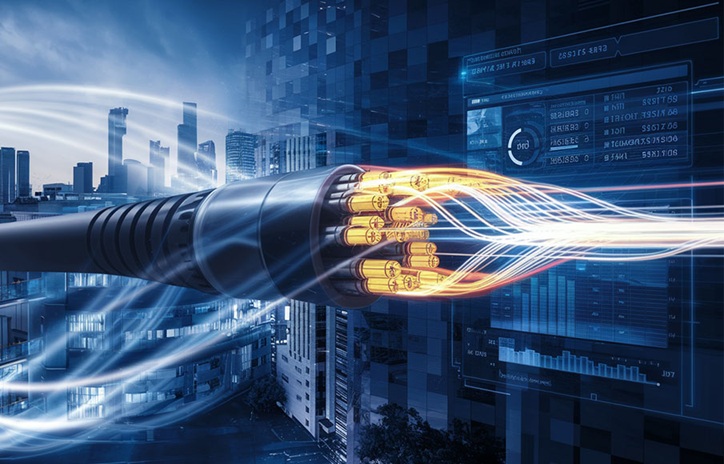Advanced fiber optic sensing solutions have emerged as transformative technologies across industries seeking to monitor critical infrastructure with unprecedented precision and reliability. These sophisticated systems leverage the unique properties of light transmission through optical fibers to detect minute changes in temperature, strain, vibration, and acoustic signals—delivering real-time insights that conventional sensing technologies simply cannot match in scale, coverage, or sensitivity.
Understanding the Fiber Optic Advantage
Traditional sensing approaches rely on discrete sensors placed at specific points, creating coverage gaps and maintenance challenges. Fiber optic systems offer revolutionary advantages:
- Continuous monitoring along entire fiber lengths spanning tens or even hundreds of kilometres
- Complete immunity to electromagnetic interference in electrically noisy environments
- No electrical components at sensing points, eliminating spark risks in hazardous areas
- Exceptional longevity with minimal maintenance requirements
- Ability to retrofit existing infrastructure with minimal disruption
- Resistance to harsh environmental conditions including extreme temperatures and corrosive elements
- “In Singapore’s dense urban environment, we’ve seen fiber optic sensing transform infrastructure monitoring from periodic point inspections to continuous, comprehensive surveillance. This shift fundamentally changes how we approach safety management—moving from reactive to genuinely predictive maintenance.”
This capability to monitor vast distances continuously represents a paradigm shift in how organisations approach safety and operational management.
Core Technologies Driving Innovation
Several distinct technologies power today’s advanced fiber sensing capabilities:
Distributed Temperature Sensing (DTS)
DTS systems measure temperature variations continuously along the entire fiber length:
- Detection of hot spots in power cables, transmission lines, and transformers
- Monitoring of pipeline temperatures for process optimisation
- Early fire detection in tunnels, transit systems, and industrial facilities
- Leakage identification in pipelines through temperature anomalies
- Environmental monitoring in sensitive installations
Distributed Acoustic Sensing (DAS)
DAS technology transforms fiber optic cables into highly sensitive “digital microphones”:
- Detection of third-party intrusions near critical infrastructure
- Monitoring of pipeline leaks through acoustic signatures
- Traffic monitoring and road incident detection
- Seismic activity detection and monitoring
- Perimeter security through footstep and vehicle detection
Distributed Strain Sensing (DSS)
DSS systems monitor structural integrity through strain measurement:
- Real-time structural health monitoring of bridges, dams, and buildings
- Early detection of ground movement threatening infrastructure
- Monitoring of deformation in tunnel linings and retaining walls
- Strain analysis in complex composite structures
- Asset integrity verification following extreme weather events
“The ability to continuously monitor strain across entire structures provides insights previously unimaginable with point sensors. In Singapore’s ambitious infrastructure projects, this capability has become particularly valuable for monitoring underground structures where traditional inspection is challenging or impossible.”
Transformative Applications Across Industries
The versatility of fiber optic sensing creates value across diverse sectors:
Oil and Gas Operations
The energy sector has embraced these technologies for critical safety applications:
- Pipeline leak detection through temperature, acoustic, and strain monitoring
- Well integrity monitoring throughout production lifecycles
- Reservoir performance optimisation through distributed temperature profiling
- Intrusion detection along pipeline corridors
- Fire detection in processing facilities and storage areas
Transportation Infrastructure
Railways, roads, and tunnels benefit from comprehensive monitoring:
- Structural health monitoring of bridges and elevated roadways
- Track condition monitoring and train position tracking
- Tunnel deformation and fire detection systems
- Traffic flow analysis and incident detection
- Perimeter security for critical transportation assets
Power Transmission and Distribution
Electrical infrastructure reliability improves through continuous monitoring:
- Cable temperature monitoring preventing overheating failures
- Detection of partial discharges indicating insulation deterioration
- Identification of potential failure points before catastrophic events
- Monitoring of underground transmission assets
- Intrusion detection around critical power infrastructure
Smart City Applications
Urban environments leverage these capabilities for improved management:
- Structural monitoring of high-rise buildings and landmark structures
- Underground utility monitoring preventing service disruptions
- Traffic flow analysis supporting intelligent management systems
- Environmental monitoring across urban areas
- Security monitoring of public spaces and critical infrastructure
Implementation Considerations for Maximum Value
Organisations seeking to implement these systems should consider several key factors:
- Integration with existing control and management systems
- Appropriate technology selection based on specific monitoring requirements
- Strategic fiber routing to maximise coverage of critical areas
- Data management strategies for the continuous information stream
- Implementation of analytics capabilities to extract actionable insights
Looking Toward Future Innovations
The field continues advancing rapidly, with emerging capabilities including:
- Enhanced spatial resolution reaching sub-meter precision
- Integration with artificial intelligence for automatic anomaly detection
- Hybrid systems combining multiple sensing modalities in single fibers
- Quantum sensing approaches pushing sensitivity to theoretical limits
- Seamless integration with digital twin technologies
“We’re witnessing constant innovation in sensing capabilities, data processing algorithms, and integration approaches. The technology’s inherent flexibility means that systems installed today can often be upgraded through software enhancements, protecting initial investments while enabling access to future capabilities.”
Conclusion: Transforming Infrastructure Management
The shift from periodic inspections to continuous, comprehensive monitoring represents a fundamental transformation in how organisations approach infrastructure safety and management. These technologies enable truly predictive maintenance, enhance operational efficiency, extend asset lifespans, and provide unprecedented safety assurances across critical systems.
As implementation costs continue decreasing while capabilities expand, these systems are becoming standard components in modern infrastructure projects and retrofits alike. For organisations seeking to enhance safety, improve operational efficiency, and gain comprehensive visibility into their critical assets, the unparalleled capabilities of advanced fiber optic sensing solutions represent an increasingly essential investment in operational excellence.

